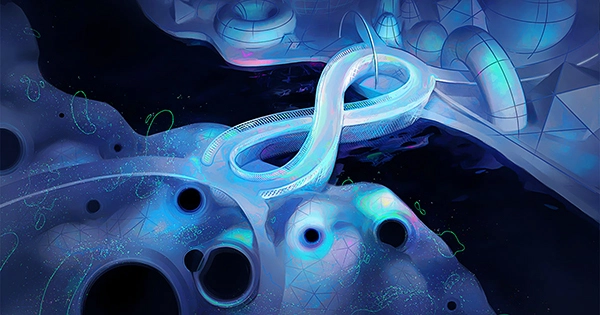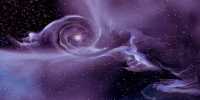Unexpectedly complicated quantum behaviors have been discovered in a crystal with a deceptively basic formula. The electron interactions within the crystal are significantly more complex than anything previously observed or predicted. To explain them, researchers must go into realms of mathematics that were previously assumed to have little or no connection to subatomic particles. Electrons should resist each other, according to the particle model we learn in school, because they both have a negative charge. However, under specific conditions, they can link together to create Cooper pairs, whose mutual movement overcomes resistance, resulting in superconductivity, which is a hugely significant occurrence.
Physicists have recently discovered that electrons in crystals may connect in significantly more unusual ways. A research published in Nature this week took things a step further, reporting on quantum loops that self-organize into knots and other structures characterized by abstruse topological niches. It remains to be seen if it will lead to anything as revolutionary as superconductivity, but it has brought together hitherto disconnected fields of expertise to acquire a better understanding of what is going on.
One of quantum theory’s most important discoveries is that subatomic particles like electrons act both as particles and as waves. Wave functions give descriptions of their wave-like behavior. Quantum topology investigates the geometry of these waves, including the previously unknown Weyl loop created by electron wave functions in crystals. Many unusual quantum behaviors can only be observed at temperatures near absolute zero, as was the case for decades with superconductivity. However, in 2019, Weyl loops in Co2MnGa crystal magnets were characterized at ambient temperature. Cobalt, manganese, and gallium aren’t the most well-known metals, but they’re also not uncommon.
It was a pleasant surprise to discover something so complicated in crystals made up of only these three elements, in such a basic chemical ratio. In comparison, “high temperature” superconductors have formulae like Hg12Tl3Ba30Ca30Cu45O127. Co2MnGa, on the other hand, appears to have more tricks up its sleeve. In Co2MnGa, something distinct is going on than in previous examples of quantum topology, which include winding wave functions.
In a statement, Princeton University graduate student Tyler Cochran, an author on the Kind research, said, “Here instead we have connected loops – our newly found knotted topology is of a different nature and gives birth to distinct mathematical linking numbers.” The number of times one curve winds around another is known as a connecting number. Professor Zahid Hasan of Princeton remarked, “When several Weyl loops coexist, it’s logical to wonder if they can connect together and knot in particular ways.”
Professor Hasan assembled a team capable of resolving those issues, bringing together expertise in previously unconnected fields such as photoemission spectroscopy (using synchrotron radiation to detect what the materials were doing) and knot theory (to make sense of the forms observed). To connect the two, a lot of quantum mechanics knowledge was necessary. “Each loop joins each other loop twice,” they remark after observing three interwoven loop linkages within a three-dimensional torus. “In the past, some of the most significant scientific breakthroughs resulted from people discovering new links between mathematics and natural occurrences.
“Finding surprising examples of sophisticated mathematics in our investigations is always thrilling,” Hasan remarked. According to reports, some mathematicians picked their fields of specialization expressly because they had no real-world applications. Topology has been selected by some with similar intentions, but they have been consistently defeated. There’s a chance this may happen again, with the work finding a use in quantum computing or telecommunications that has yet to be discovered.















